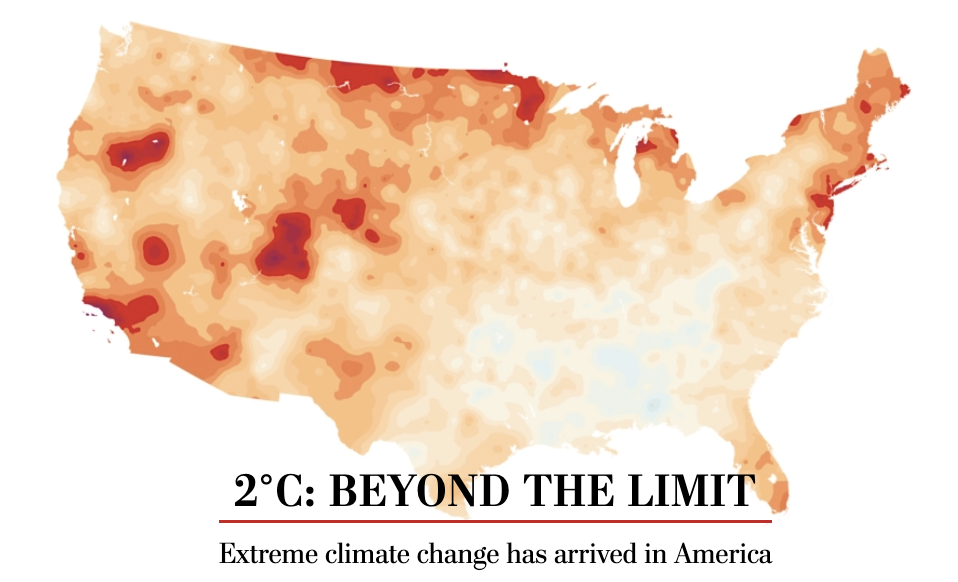. . .
Over the past two decades, the 2 degrees Celsius number has emerged as a critical threshold for global warming. In the 2015 Paris accord, international leaders agreed that the world should act urgently to keep the Earth’s average temperature increases “well below” 2 degrees Celsius by the year 2100 to avoid a host of catastrophic changes.
The potential consequences are daunting. The United Nations Intergovernmental Panel on Climate Change warns that if Earth heats up by an average of 2 degrees Celsius, virtually all the world’s coral reefs will die; retreating ice sheets in Greenland and Antarctica could unleash massive sea level rise; and summertime Arctic sea ice, a shield against further warming, would begin to disappear.
But global warming does not heat the world evenly.
A Washington Post analysis of more than a century of National Oceanic and Atmospheric Administration temperature data across the Lower 48 states and 3,107 counties has found that major areas are nearing or have already crossed the 2-degree Celsius mark.




